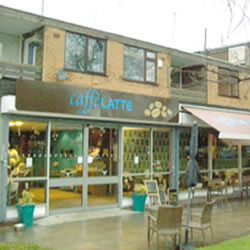More Clients Memorandum
Lazy marketing rant
Posted on July 3rd, 2011.I hate lazy marketing.
How many times in the last couple of weeks have you heard about new products, services or even books that are apparently “game changers”?
Or “innovative”? Or “leading edge”?
How many websites have you been to where they promise to teach you “how to quickly and easily…” do something or other? (of course, it's never quick or easy). Or tell you you'll soon be “crushing it” or they'll get you to the “next level” whatever the latest in-phrase is.
Now, the first time you hear these phrases they have impact. Maybe even the third or fourth time too.
But over time, you start to ignore them, or just not believe them. If everything is “game-changing” then nothing is.
How about this gem: “Learn how to harness the power of referrals to get a flood of new clients for your business”.
Sadly, that's one of mine. Written years ago when I released my first ebook on how to get more referrals.
Now I'm still very proud of the content of the ebook – it stands up well today and is a great guide for professionals who want to get more referrals.
But “harness the power” and “a flood of new clients”? What was I thinking?
Lazy marketing comes from two sources.
Sometimes, the marketer really is lazy. They can't be bothered writing decent copy or coming up with a decent idea for how to promote their services. So they copy what everyone else is using.
Unfortunately, that means what they write becomes invisible. If everything looks and sounds the same, it disappears into the background. Especially true if we're talking about something like Google Adwords where 8 ads are shown next to each other. Next time you do a search for something read the ads and see just how similar they often look.
More often though, it happens because the marketer hasn't really understood their target client. They haven't gone beyond the surface to understand what motivates them and why they might want what you have to offer.
As a result, they're forced to use generic descriptions and hype to say how good it is – rather than being able to state precisely the benefit their client actually wants.
In my case, I got as far as knowing that professionals are interested in referrals because they want more clients. But I didn't go deeper than that so I had to use hype like “power” and “flood of clients”.
What I should have done was ask why they wanted more referrals and more clients.
Perhaps their business was struggling and they were in financial difficulties? Or perhaps they were looking to bring in more clients to get promoted to partner? Or maybe the real motivation was because they felt uncomfortable with cold calling and networking and wanted a method they could use that didn't make them cringe?
There's usually no “one right answer”. When you dig a little deeper you often find that different people want your services for different reasons. And that's OK – it means you should market to those different people in different ways.
Perhaps, for example, I could have done a Google Adwords ad asking “Hate Cold Calling? Get More Clients Through Referrals Instead” or similar.
It wouldn't have hooked everyone. But for those in that situation it's a lot more compelling than the myriad of unbelievable ads offering a “flood of new clients”.
Have you been lazy with your marketing?
Take a look at your website, your brochures, your online and offline advertising.
Is it filled with generic phrases, hype and platitudes?
If so, your first step is to think more deeply about your clients and what they really want. Keep asking yourself (or even better, them) the question “why?” until you get to the underlying reason – often a feeling or an emotion.
Focusing on that will get you much more attention than the generic copycat marketing we so often see.
 About 2 years ago, a new coffee shop called Caffe Latte opened in our local village.
About 2 years ago, a new coffee shop called Caffe Latte opened in our local village. If you're like me and you subscribe to a zillion email newsletters and blogs, you probably hear the following type of stories fairly regularly:
If you're like me and you subscribe to a zillion email newsletters and blogs, you probably hear the following type of stories fairly regularly: Understanding markets is important. Big trends. Overall pictures. What clients want generally. Where to position your firm to hit a “sweet spot”.
Understanding markets is important. Big trends. Overall pictures. What clients want generally. Where to position your firm to hit a “sweet spot”. Our next Authority Marketing podcast is with Jane Mason, founder and director of Virtuous Bread.
Our next Authority Marketing podcast is with Jane Mason, founder and director of Virtuous Bread.